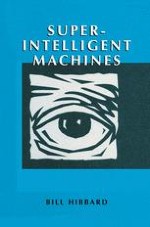2002 | Buch
Über dieses Buch
Super-Intelligent Machines combines neuroscience and computer science to analyze future intelligent machines. It describes how they will mimic the learning structures of human brains to serve billions of people via the network, and the superior level of consciousness this will give them. Whereas human learning is reinforced by self-interests, this book describes the selfless and compassionate values that must drive machine learning in order to protect human society. Technology will change life much more in the twenty-first century than it has in the twentieth, and Super-Intelligent Machines explains how that can be an advantage.
Anzeige
